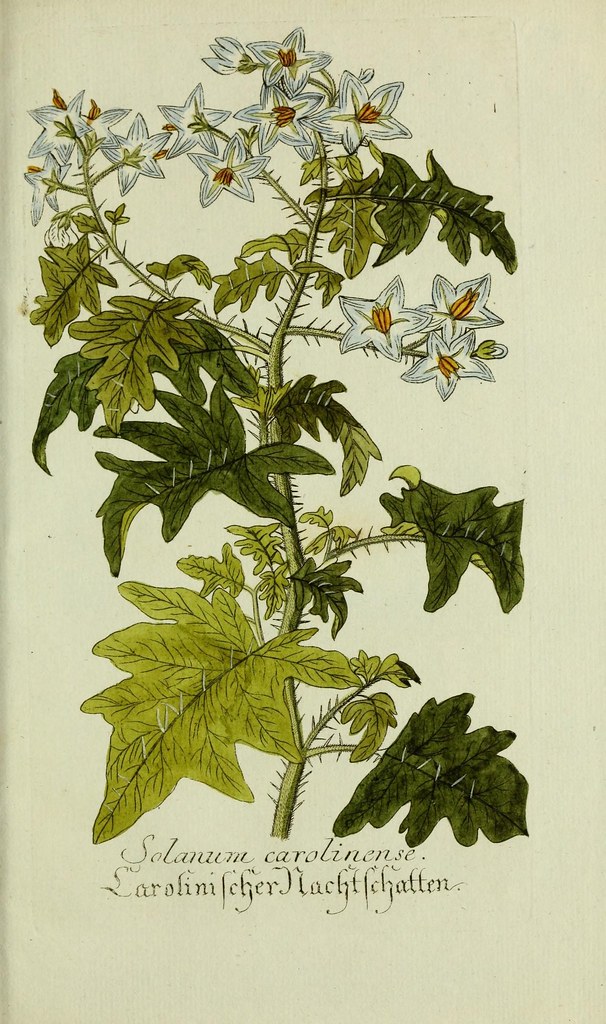#horsenettle
Photo
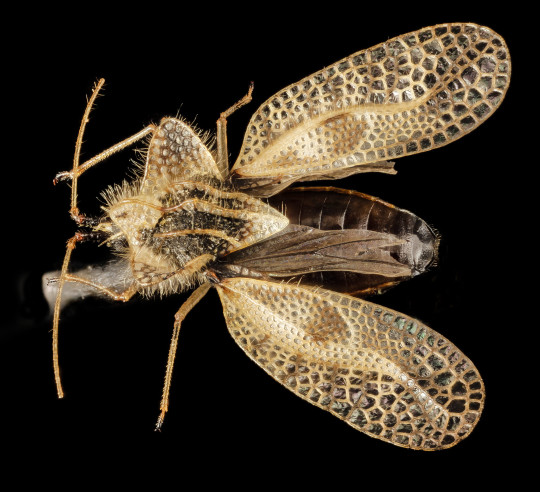
Lace bug, how exquisite, the patterns and colors of the cells of this tiny bug. The one found on Horsenettle by Ashley Bradford on the Pickering Creek Audubon Sanctuary BioBlitz.
29 notes
·
View notes
Photo

ワルナスビ #オニナスビ #アレチナスビ #ノハラナスビ #solanum #carolinense #carolinahorsenettle #horsenettle #花 #flower #ガーデニング #gardening #花言葉 #欺瞞 #悪戯 https://www.instagram.com/p/CeTD9BkBmBD/?igshid=NGJjMDIxMWI=
#オニナスビ#アレチナスビ#ノハラナスビ#solanum#carolinense#carolinahorsenettle#horsenettle#花#flower#ガーデニング#gardening#花言葉#欺瞞#悪戯
0 notes
Text
I have to share a little of my burgeoning cottagecore life (that doesn't include nªzi ideals, fuck white supremacy). Last weekend I was doing some work in the yard and finally got a chance to pull out my plant ID app. I took a photo of this, frankly, angry looking weed that proliferates my green spaces. I like weeds and wildflowers. They tell me a LOT about the land, but I'm just not familiar with the flora here. Yet. It is called Carolina Horsenettle. I only looked it up when I did because I saw the fruit on a plant my partner stepped on. I recognized the fruit from that family. It is a nightshade, a deadly one. *surprised Pikachu face* For half of my life now, 20+ years, I have longed to find a nightshade in the wild. Now, I have so, so many.
More importantly, though, this solves another problem. Tomato worms. As I was cooing over the large patch of the nightshade in the middle of my yard, my partner points out 'one of those worms'. We found a big monchy boi monching on the leaves of one of them. For those who may not know, tomatoes are also a nightshade.



This means I can transfer the monchy bois from my veggies to a natural food source instead of having to kill them or spray my plants with some poison or another (not that I'm opposed).
As a lifelong gardner, I've learned that if I provide adequate food for the fauna, they leave my food alone. If I can find a natural source, we're both better off. I don't have a photo of a happy monchy boi, but please feast your eyes on my angry plant.
#plants#native flora#nightshade#tomato#tomato worms eat poison to live#carolina horsenettle#it bites#cottagecore#ecology#land management#local ecosystem
7 notes
·
View notes
Text

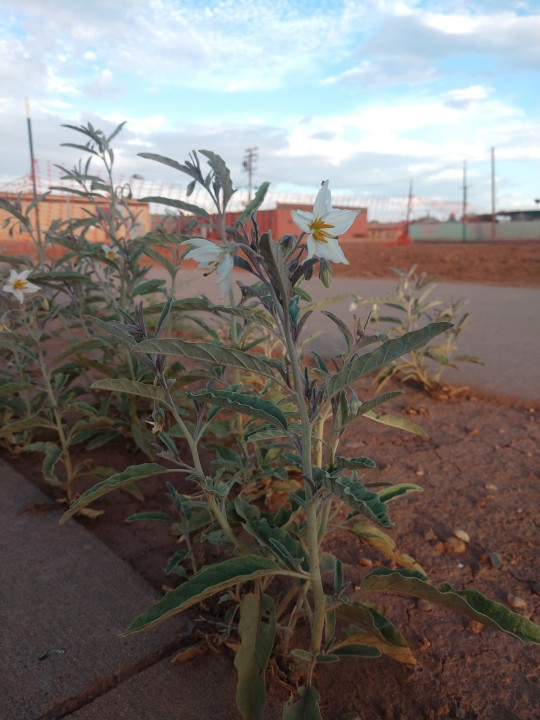
Have some of the silverleaf nightshade that grows wild in town like a damn weed.
I respect this little patch in particular, no matter how hard the city culls back these little papery stars, paler than their dusty lavender siblings, it grows back every time, just as tenacious as the rest.
Love those stubborn little poisons. 💜💜💜
#answers to questions nobody asked#fun fact it's also known as white horsenettle which always catches in my brain when I'm playing fnv#yes i know they're a noxious weed that can do significant harm to people and livestock but belladonna is my favorite girlboss
3 notes
·
View notes
Text




Tumblr decided to eat dick when I posted these so I’m trying again. Poppy’s asshole ex friends
#firas art#oc laurel cookie#oc horsenettle cookie#oc hemlock cookie#oc belladonna cookie#cookie run ovenbreak
11 notes
·
View notes
Text
Here's some of the wild, native, perennial nightshades growing at our local park!
Solanum Carolinense, aka Carolina Horsenettle, very spiny and also toxic to humans, but an important food source for native birds including wild turkeys and quail!
These guys spread through both seeds and underground runners, so they're considered a noxious weed in a few states outside their native range; one site I just found says one plant can produce up to 5,000 seeds, which require cold stratification before they will sprout, meanwhile, the plants roots send up new shoots each spring during the warmer months.
Here's some pictures of the flowers, and immature fruit; from Google we know that when the fruit are actually mature, they'll turn orange/yellow and usually hang around on the plant all winter even after the leaves and stems have died back completely.
Some plants had lavender purple flowers. While others had pure white, sometimes both on the plant at the same time! I believe that like some other nightshades, the flowers start out purple and turn white as they age over the course of a day or two.
If you're ever walking down a park or forest path, keep your eyes peeled! Nightshade/Solanacae flowers are one of the easiest things to recognize, and they come in all sizes, with many of them having at least a handful of different species native to each US state, a few of which are edible, like the wild Groundcherries that can be found all over the United States!


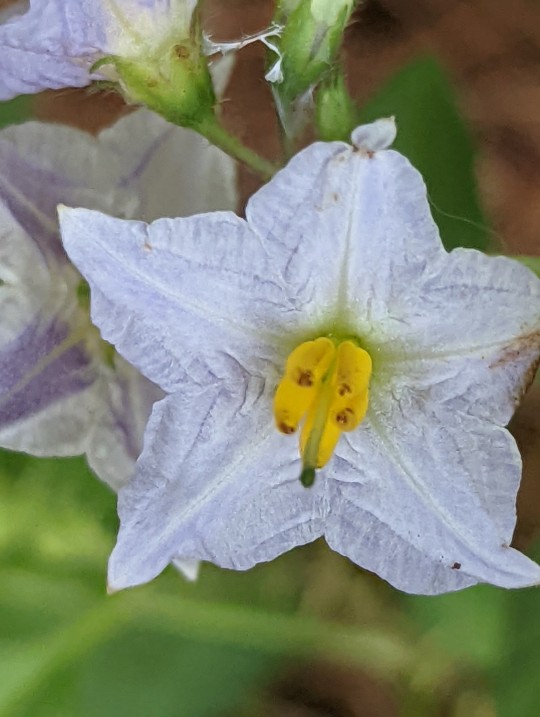


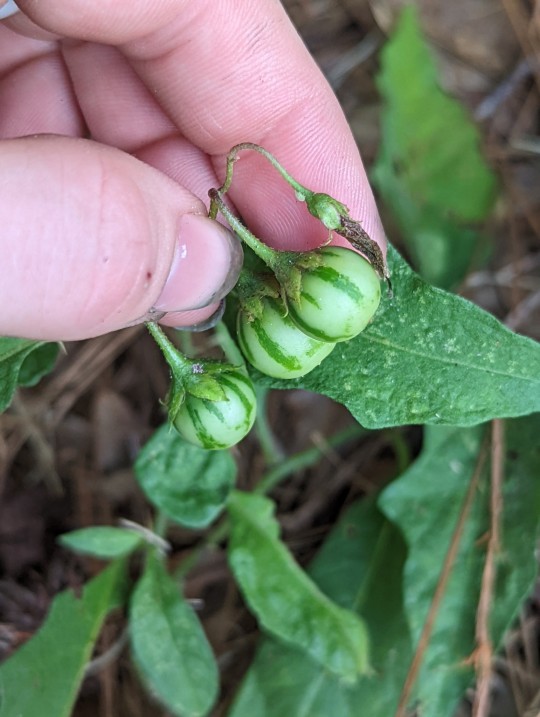
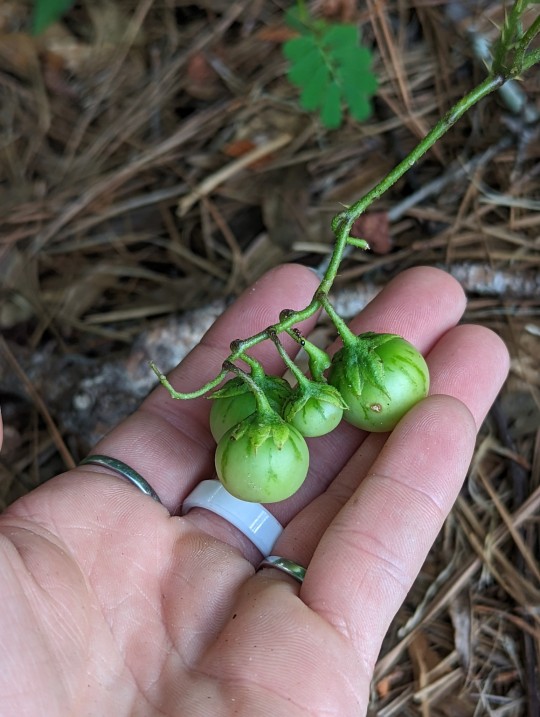
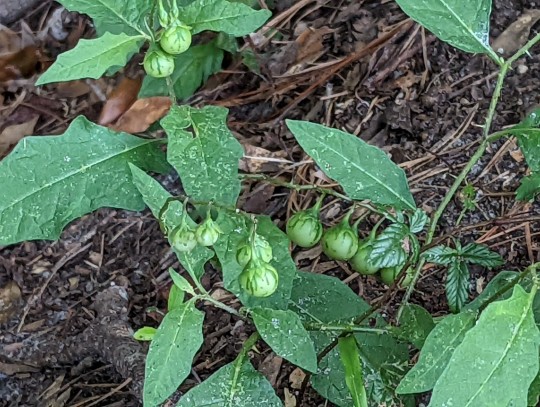
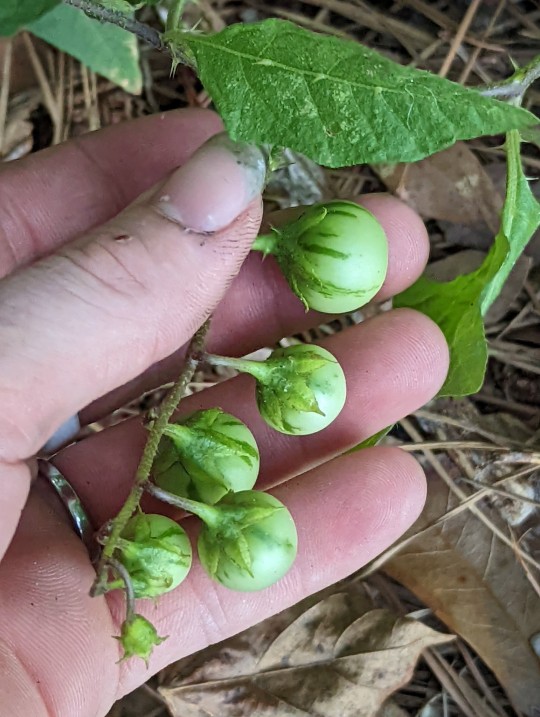

#solanum#solanums#Solanum Carolinense#Carolina horsenettle#no id#will add later#native plants#toxic plants
2 notes
·
View notes
Text


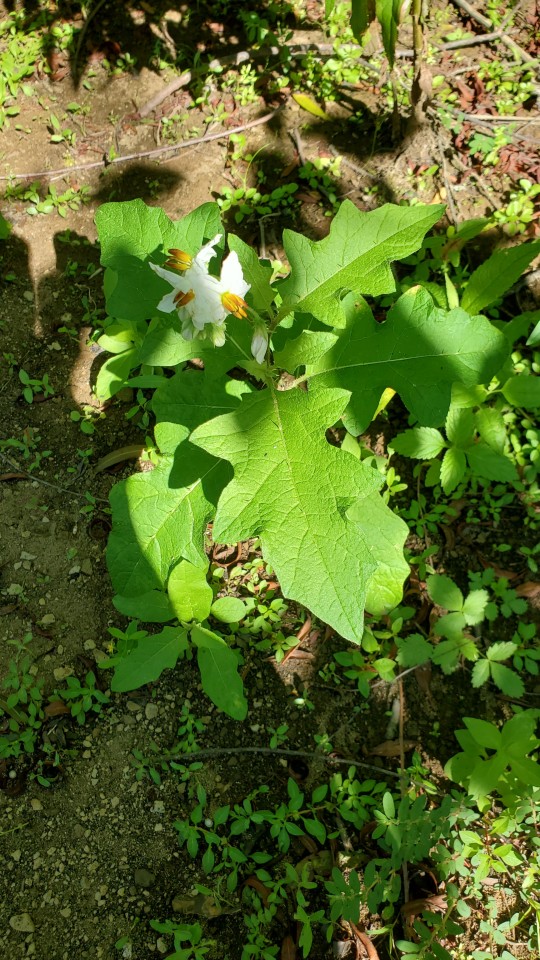
7/30/22
2 notes
·
View notes
Video
n134_w1150 by Biodiversity Heritage Library
Via Flickr:
Plantarum indigenarum et exoticarum icones ad vivum coloratae, oder, Sammlung nach der Natur gemalter Abbildungen inn- und ausländlischer Pflanzen, für Liebhaber und Beflissene der Botanik /. . biodiversitylibrary.org/page/44261077
#Botany#fast#Pictorial works#Plants#Harvard University Botany Libraries#bhl:page=44261077#dc:identifier=http://biodiversitylibrary.org/page/44261077#Solanum carolinense#flickr#Carolina horsenettle#botanical illustration#scientific illustration#radical weed#sand briar#sand brier#bull nettle#tread-softly#Solanum mammosum#wild tomato#apple of Sodom#devil's tomato
1 note
·
View note
Photo

Scientific Name: Solanum dimidiatum
Common Name(s): Western horsenettle
Family: Solanaceae (nightshade)
Life Cycle: Perennial
Leaf Retention: Deciduous
Habit: Forb
USDA L48 Native Status: Native
Location: Plano, Texas
Season(s): Summer
Deadly tomato.
#Solanum dimidiatum#western horsenettle#Solanaceae#perennial#deciduous#forb#native#Plano#Texas#summer#fruit#green#toxic plants#poisonous plants#nightshade#plantblr
0 notes
Text
a false potato beetle (Leptinotarsa juncta) larva enjoys a succulent horsenettle blossom. oh to be a gelatinous sack optimized for digestion
625 notes
·
View notes
Text

I found an interesting, faintly thorny plant with delicately pale purple flower growing around my compost. After a little searching I identified it as Solanum carolinense, commonly called "Carolina Horsenettle", but also affectionately referred to as "the Apple of Sodom" or "the Devil's Tomato". I am still a fairly miserable gardener, but I have been blessed with the favor of nightshades.
#i would pay you to take some of my tomato volunteers#nightshade#toxic plant#native plants#poison path
14 notes
·
View notes
Text
November 27th, 2023


False Potato Bug (Leptinotarsa juncta)
Distribution: Mostly found in the Eastern USA, from the southeast to the mid-atlantic; distribution extends up past Maine.
Habitat: Found wherever host plants grow; old fields, orchards, hay fields and pastures.
Diet: Feeds on the leaves of plants in the nightshade family, such as horsenettle, ground cherries, bittersweet nightshade and plants of the genus Physalis. While it occasionally feeds on potato plants, this does not incur growth or reproduction.
Description: The false potato bug bears a similar appearance to its destructive cousin, the Colorado potato bug, but is much less of a pest to crops, only rarely feeding on potato.
This species has a fairly quick lifecycle, with one to three generations of adults emerging per year, depending on latitude—but even as far north as Canads, they usually have two generations per year. Adults overwinter in the soil, emerging when their host plants begin to sprout. After feeding on these fresh plants for 5-10 days, females deposit eggs on the undersurface of the host plant's leaves. Larvae feed continuously on these leaves when they hatch, usually for 21 days, before dropping to the ground at maturity and burrowing into the soil to pupate.
(Images by WonGun Kim and Anita Gould)
5 notes
·
View notes
Note
Hail Oracle!
-Offers a necklace of corded leather with iridescent black feathers- They say it was made with the lost feathers of a great wyrm.
Nightshade has sprawled across my back yard, I didn't realize it could look so nice and be so soft to walk on. Do you have any favourite grasses or plants you enjoy letting go a little wild?
(I miscalculated with my side blog...didn't realize they couldn't send asks/submit V.V)
-🦊
Oooh unless you mean, like, horsenettle or whatever, that's one of the prettiest ways I've ever heard someone call twilight in a good dozen decades or so :)
I like speedwells and daisy fleabane and clover and probably lots of other things but grasses aren't a strong suit for me!
~Send me anons and asks for TMI Tuesday fun and prophet!~
2 notes
·
View notes
Text

Carolina horsenettle (Solanum carolinense). Also known as apple of Sodom, bull nettle, devil's potato, devil's tomato, poisonous potato, thorn apple, and wild tomato. As some of its names suggest, it's quite poisonous.
5 notes
·
View notes
Text

Carolina Horsenettle Watercolor (Solanum carolinense)
Available on INPRNT
5 notes
·
View notes
